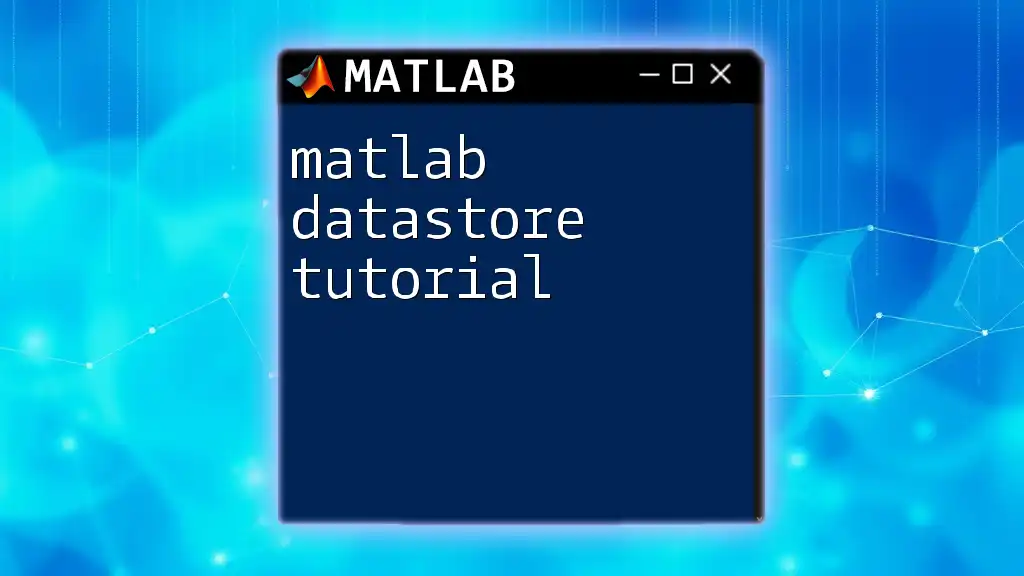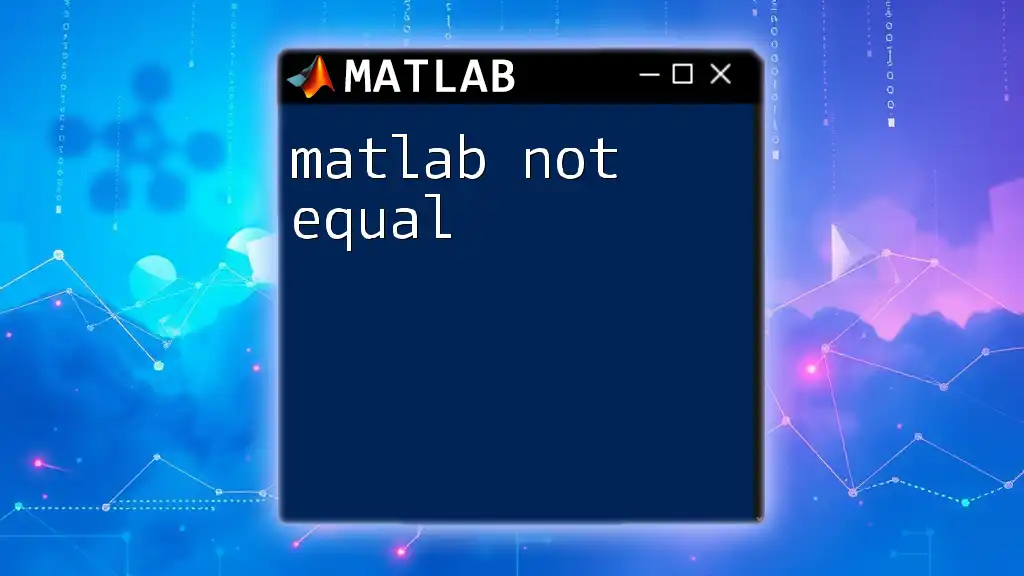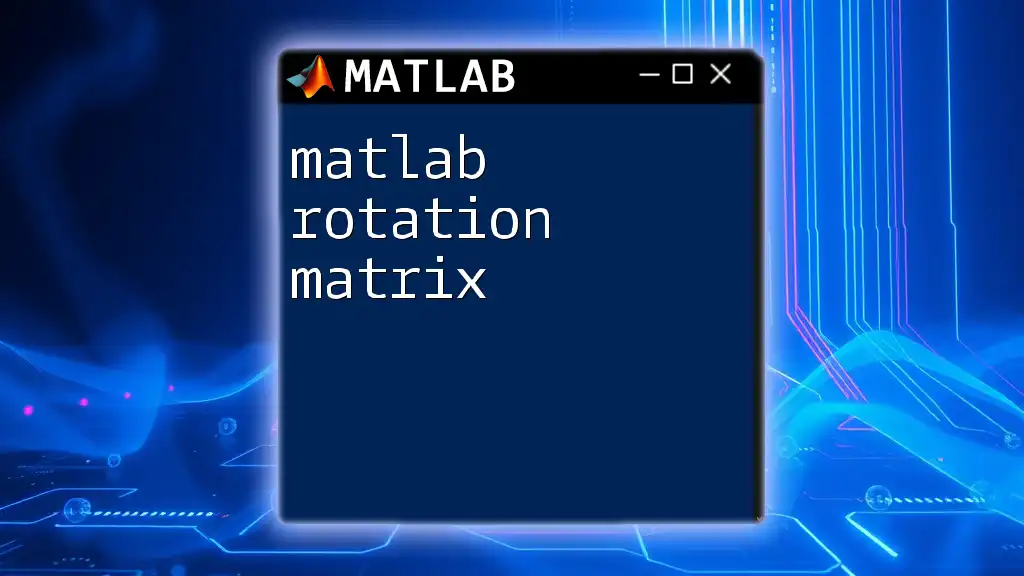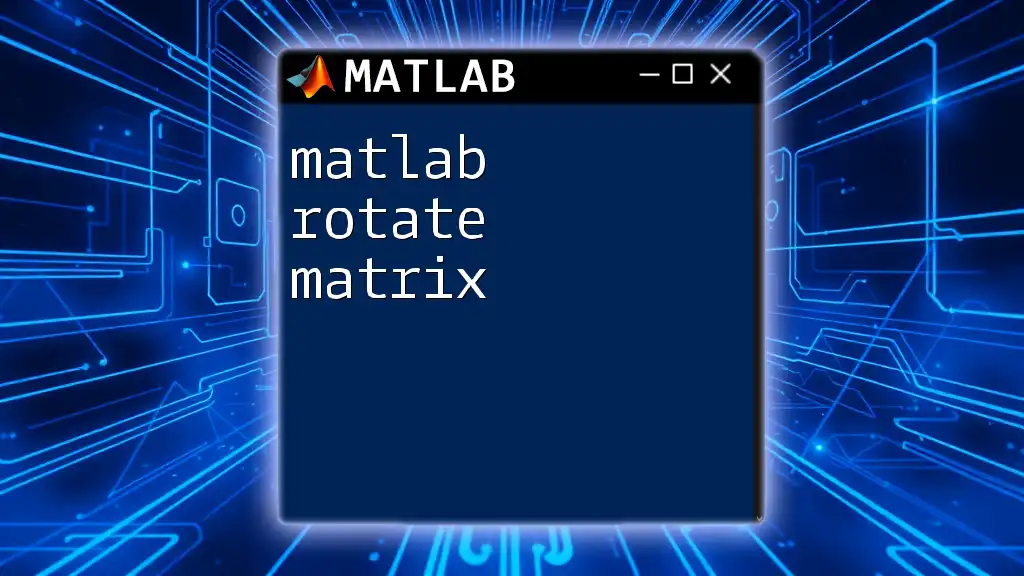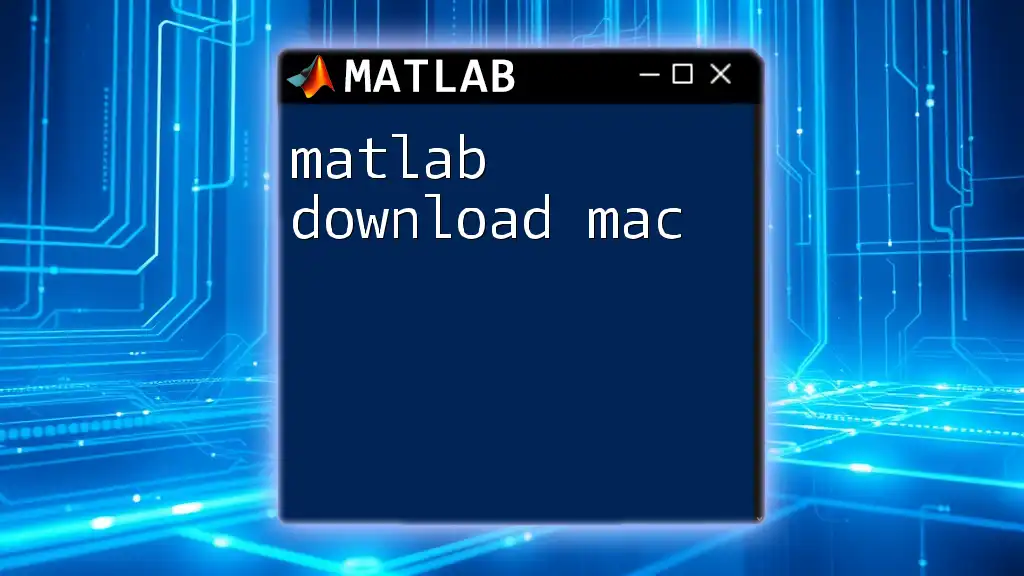In MATLAB, the dot operator is used for element-wise operations on arrays, enabling mathematical computations independently on each element.
% Example of element-wise multiplication using the dot operator
A = [1, 2, 3];
B = [4, 5, 6];
C = A .* B; % Result: C = [4, 10, 18]
Understanding the MATLAB Dot Operator
What is the Dot Operator?
The dot operator is an essential feature of MATLAB that allows for element-wise operations on arrays and matrices. Unlike standard operations that follow linear algebra rules, the dot operator enables manipulation of data at the element level, making it invaluable for a wide range of calculations in programming and data analysis.
Types of Dot Usage in MATLAB
Element-wise Operations
One of the primary applications of the dot operator is in element-wise arithmetic operations. This involves operations such as addition, multiplication, division, and power. To perform element-wise operations, the following syntax is used:
- `.*` for multiplication
- `./` for division
- `.^` for exponentiation
Example:
A = [1, 2; 3, 4];
B = [5, 6; 7, 8];
C = A .* B; % Resulting in the matrix [5, 12; 21, 32]
In this example, each element of matrix A has been multiplied by the corresponding element of matrix B.
Struct Field Access
In MATLAB, the dot operator is also used to access fields of structures. This provides a clear and concise way to retrieve data stored within complex data types.
Example:
S.name = 'John';
S.age = 30;
disp(S.name); % Outputs: John
This demonstrates how the dot operator simplifies accessing values inside a structure.
Object Property Access
For users engaged in object-oriented programming with MATLAB, the dot operator is critical for accessing properties and methods of objects. It allows for a clear and straightforward way to interact with class properties.
Example:
obj = MyClass();
obj.propertyName = 'Value'; % Assigning a value to a property of an object
In this case, `propertyName` is a property of the instance `obj` of the class `MyClass`.

The Power of Element-wise Operations
Advantages of Using Element-wise Operations
Element-wise operations provide several advantages, including:
- Improved performance when dealing with large datasets due to reduced computational complexity.
- Code simplicity as they eliminate the need for loops in many common matrix operations, making code cleaner and easier to read.
When comparing element-wise operations with matrix operations, it is vital to consider data types and dimensions. Element-wise operations require matrices of the same size or compatible dimensions, whereas standard matrix operations involve the multiplication rules in linear algebra.
Commonly Used Dot Functions
Dot Product vs. Element-wise Multiplication
Understanding the difference between the `dot` function and element-wise multiplication is essential. The `dot` function computes the dot product of two vectors, which is a single number, while the `.*` operator performs element-wise multiplication and results in a new array.
Example:
x = [1, 2, 3];
y = [4, 5, 6];
dp = dot(x, y); % Standard dot product, Result: 32
em = x .* y; % Element-wise multiplication, Result: [4, 10, 18]
In this example, the result of the `dot` function summarizes the relationship between vectors x and y, while the element-wise multiplication produces an array with corresponding products.
Visual Representation of Operations
To truly grasp the differences between standard matrix multiplication and element-wise multiplication, visualizing operations through plots can be extraordinarily effective. By plotting results from both methods, users can gain insights into how data is transformed, enhancing their understanding of the underlying processes.

Advanced Applications of the Dot Operator
Practical Examples in Data Analysis
Using Dot Operators in Statistical Calculations
MATLAB dot operations are frequently employed in statistical methods. They facilitate tasks like computing the mean, variance, and other statistical metrics in a straightforward way.
Example:
data = rand(100, 1); % Generate sample data
mean_value = sum(data) ./ length(data); % Mean using the dot operator
In this scenario, the dot operator allows for a quick computation of the mean by performing element-wise division between the sum of the data and its length.
Image Processing
Element-wise operations play a critical role in image manipulation, whether it’s changing brightness, contrast, or applying filters.
Example:
img = imread('image.jpg');
img_gray = rgb2gray(img);
img_bright = 1.5 .* img_gray; % Brightening an image
In this example, multiplying the grayscale image by 1.5 increases brightness, demonstrating the practical applications of the dot operator in image processing.

Best Practices and Common Pitfalls
Tips for Effectively Using the Dot Operator
To get the most out of the dot operator, consider the following tips:
- Always ensure that the arrays involved in element-wise operations are of compatible sizes to prevent dimension mismatch errors.
- Use element-wise operations when dealing with arrays instead of writing loops; this not only simplifies your code but also optimizes performance.
Common Mistakes to Avoid
Misunderstanding the differences between matrix and element-wise operations is a common pitfall. Ensure you clearly visualize your operations and understand their implications.
Example ofErrors:
A = [1, 2; 3, 4];
B = [5, 6];
C = A * B; % This will throw an error due to dimension mismatch
In this scenario, forgetting that the matrices must adhere to multiplication rules leads to errors in code execution.

Conclusion
The MATLAB dot operator is a powerful tool that enhances the capability of users to perform complex calculations with ease. Understanding its applications in element-wise operations, as well as in structure and object manipulation, empowers programmers to write efficient, effective code. By mastering the dot operator, you can significantly optimize your MATLAB programming skills and streamline your data analysis processes.

Frequently Asked Questions
How does the dot operator differ from regular operators?
The dot operator allows for element-wise operations, while regular operators perform traditional linear algebra calculations.
When should I use the dot operator in my code?
Utilize the dot operator when you need to execute operations on corresponding elements of arrays or matrices, particularly when performing arithmetic calculations.
Can I use the dot operator for multidimensional arrays?
Yes, the dot operator can also be applied to multidimensional arrays, as long as the dimensions align correctly for element-wise operations.

Additional Resources and Learning Materials
For further learning, consider exploring MATLAB's official documentation, which provides a wealth of information on using the dot operator and other essential functions. Engaging in additional tutorials and courses can deepen your understanding and application of MATLAB in real-world scenarios.










